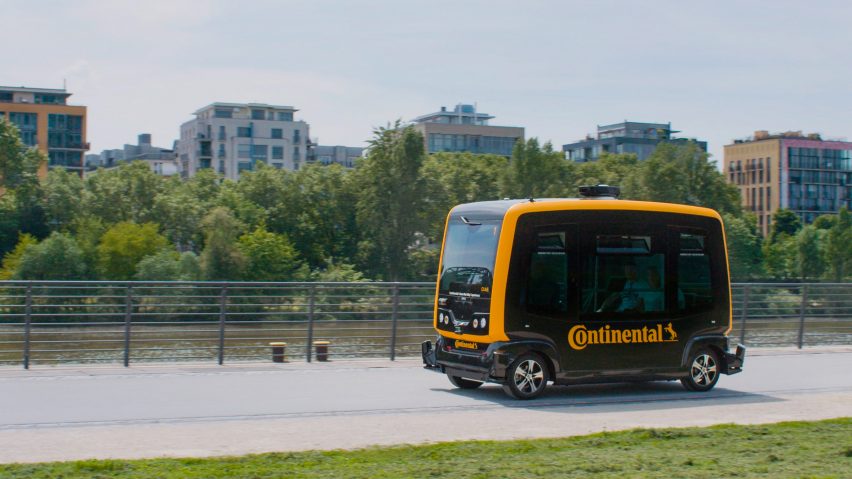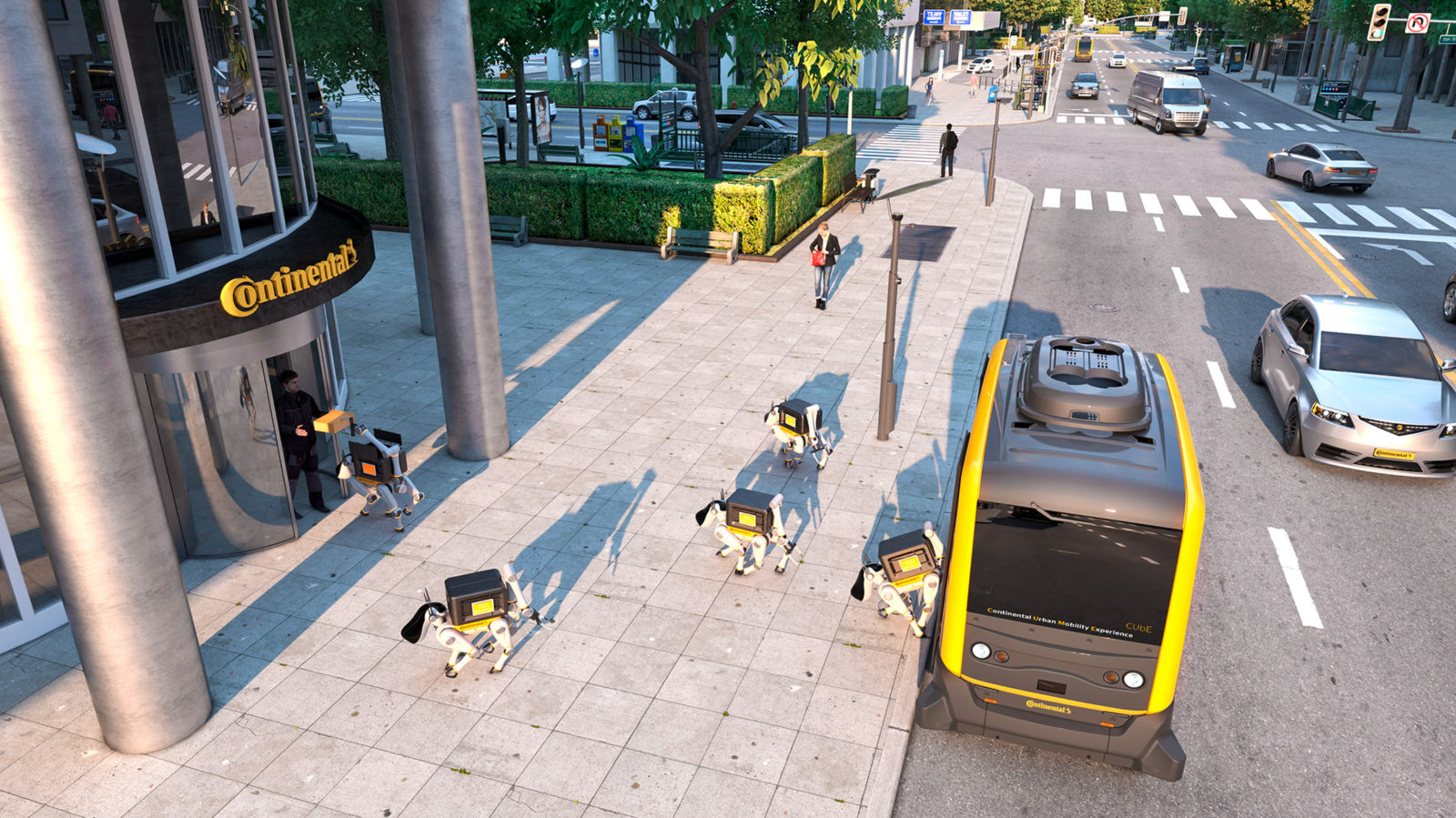German automotive company Continental wants to use a system of autonomous vans packed with dog-like four-legged robots to deliver packages.
The company revealed its vision for the future of goods and parcel delivery this week at tech show CES in Las Vegas, where it held a press conference with a prototype of one of the robots on stage.
The concept is based around Continental‘s driverless electric vehicle, the Continental Urban Mobility Experience (CUbE), a minibus-sized pod whose interior can be reconfigured to suit different functions.
The company has paired the vehicle with delivery robots – also autonomous and electric – to enable the system to handle the “last yards” of the parcel delivery chain.

“With the help of robot delivery, Continental’s vision for seamless mobility can extend right to your doorstep,” said Continental’s Ralph Lauxmann, who is head of systems and technology in the chassis and safety division. “Our vision of cascaded robot delivery leverages a driverless vehicle to carry delivery robots, creating an efficient transport team.”
Prototype resembles Boston Dynamics robot
The prototype robot showcased on the CES stage has features and locomotion similar to Boston Dynamics’ famous quadrupedal SpotMini, but renderings for the concept suggest a cuter, more rounded canine appearance.
According to Continental, the same technologies that power an autonomous vehicle like CUbE are applied to the robots. Sensors, environment perception
Continental says that an efficient autonomous mobility system could focus on moving passengers during the day and switch to delivering goods at night, when people are more likely to be at home to receive their packages. The system could be almost 24/7.
“There will be peaks in demand for driverless vehicles during the day,” said Continental North America director of systems and technology Jeremy McClain. “To make use of driverless vehicles outside those peak ‘rush’ hours is where robot-delivery comes in.”
“We see great potential in our automotive technology to support robotics companies in developing autonomous delivery robots as an additional use case for driverless vehicles.”
By Rima Sabina Aouf

